MUSICIAN PEGASUS II R2R HiFi DAC – Revealer Of Hidden Worlds
Musician Pegasus II is an R2R $1099 USD DAC sold and fulfilled by Aoshida, and produced by Musician. Today we will review and explore the Pegasus II and compare it to other high-end flagship DACs, including Dethonray Listening M1 (2599 USD), Denafrips Ares II R2R DAC (800 USD), FiiO K9 PRO ESS (849 USD), Keces S3 (1300 USD) and Audio Analogue AAdac (4000 USD).
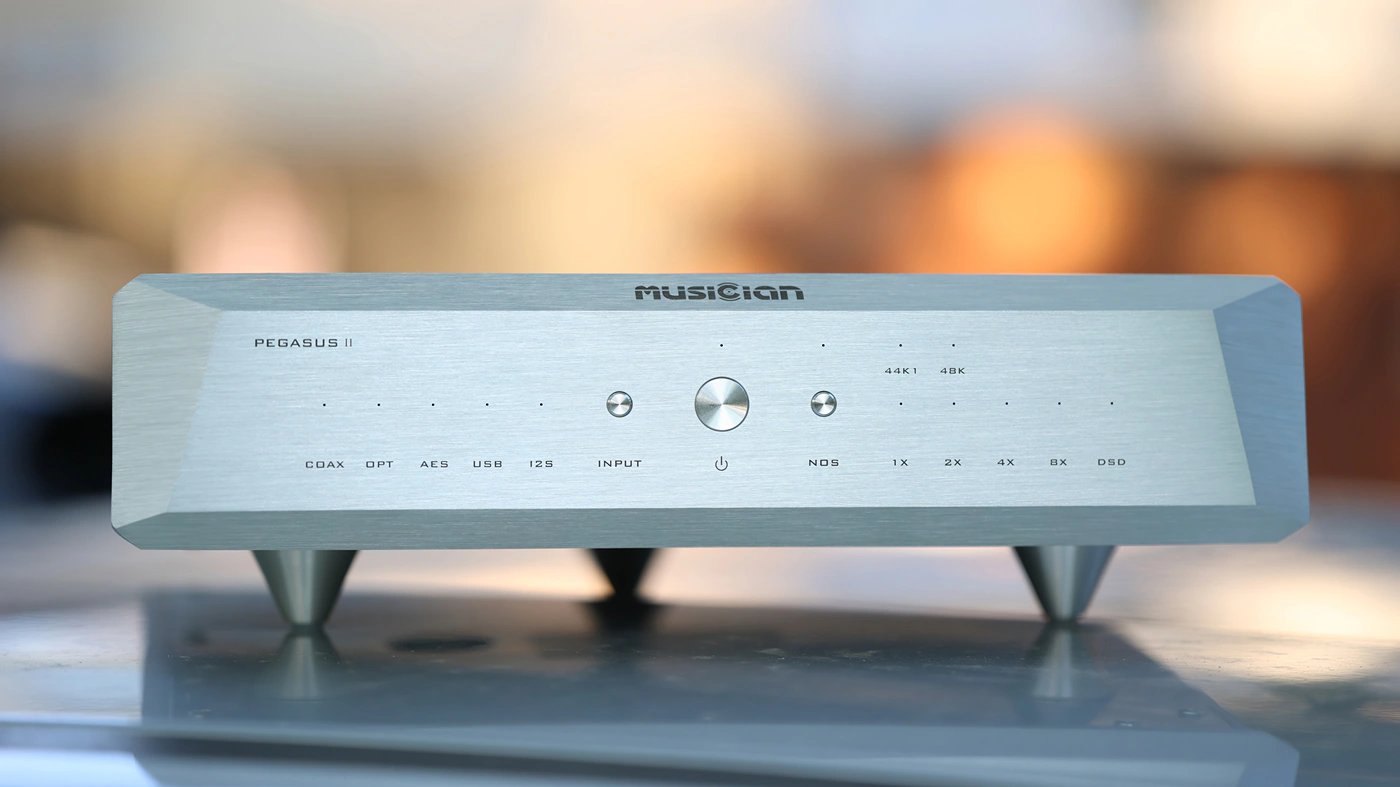
Introduction
Aoshida brought even more amazing deals for their products, but today we review a true flagship, the Pegasus II R2R DAC. This is a desktop-class DAC, and it has balanced outputs, an R2R DAC inside, with 24 Bits processing, along 6 Bits DSD decoding. Aoshida is generally one of the most popular shops for audio products made in China, and they cover everything, from entry-level SMSL DACs, all the way to flagship boutique solutions like Musician that we are reviewing today. As an Amazon Influencer, I earn from qualifying purchases, and using the purchase links in my reviews helps me maintain this website and Youtube Channel. A huge thanks to Aoshida for providing us with the sample for this review.
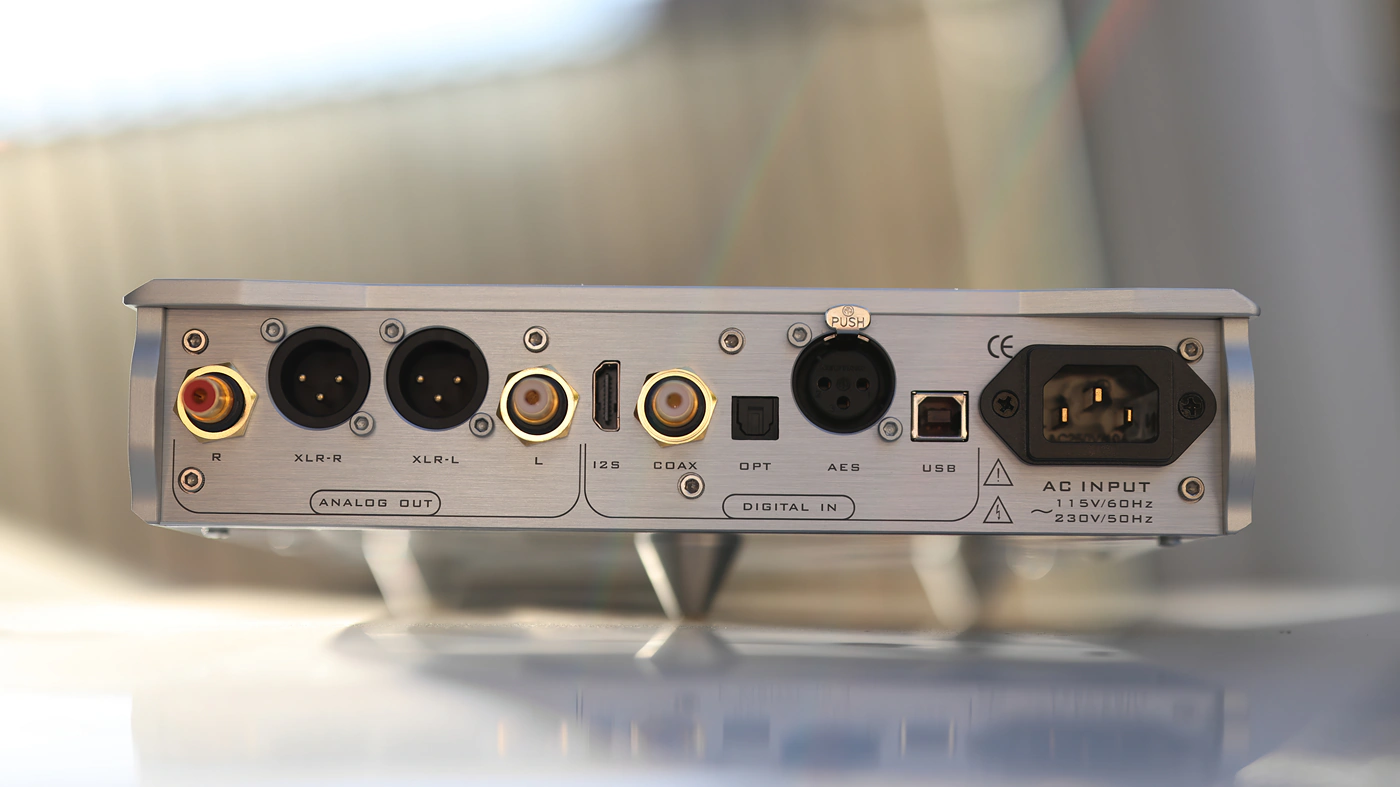
PROs – Excellent sonic performance, with a detailed, organic and vivid midrange, fast, punchy and deep sounding bass, and a bright, brilliant treble. No USB DAC delay, and you can quickly switch between the OS and NOS modes. Support for high resolution formats exceeded what the market offers at this moment, and Pegaus II offers literally the highest support for both DSD and PCM signals from everything I ever reviewed and heard. Silver color is beautiful, and the casing is very solid, the three feet offering a unique look for a flagship DAC.
Cons – Considering the market and performance, no cons I can mention, although it has no PRE function, so a PRE will be needed for a system where it is implemented.
Product Link
Aoshida Official Website – https://aoshida-audio.com/products/musician-pegasusii
Aliexpress Store – https://www.aliexpress.com/item/4001054786298.html
Amazon – https://amzn.to/3AJjNP6
Build Quality/Aesthetics
Physically, the Musician Pegasus R2R is a high-end DAC with a beautiful metallic case, three feet to support its weight, and a whopping weight of 3.9 KG. Being one of the heaviest DACs I have seen to date, it is nice to know that it has excellent isolation from interference and noise, and that while it does get slightly warm during usage, it never gets hot, as the power consumption stays below 20w at maximum. We have decided to go with silver devices from now on, and we recommend you to do so as well, as they look really beautiful both in photos and on our desk.
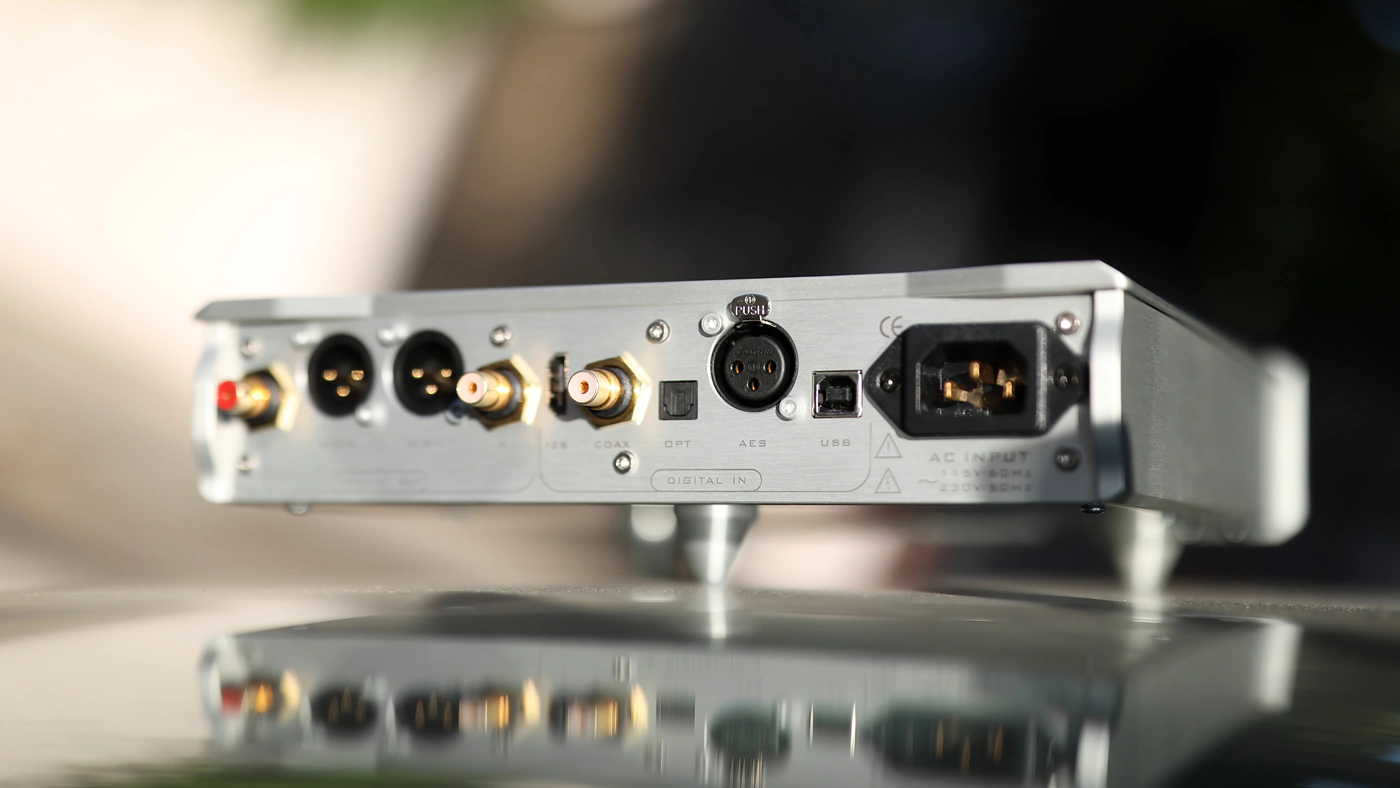
To start with our review, we have to look at the heart of the Pegasus R2R II DAC, as we have a proprietary R2R + DSD decoding composed of a discrete resistor network, commonly known as an r2r dac. FPGAs control the switching of the discrete resistors to convert the digital signals to analog audio signals, and this approach allows for more flexibility in the algorithms used by the chips, surpassing the limitations typically imposed by chip DACs. The USB input is in a class of its own, Musician using a high-end STM32F446 dedicated USB interface.
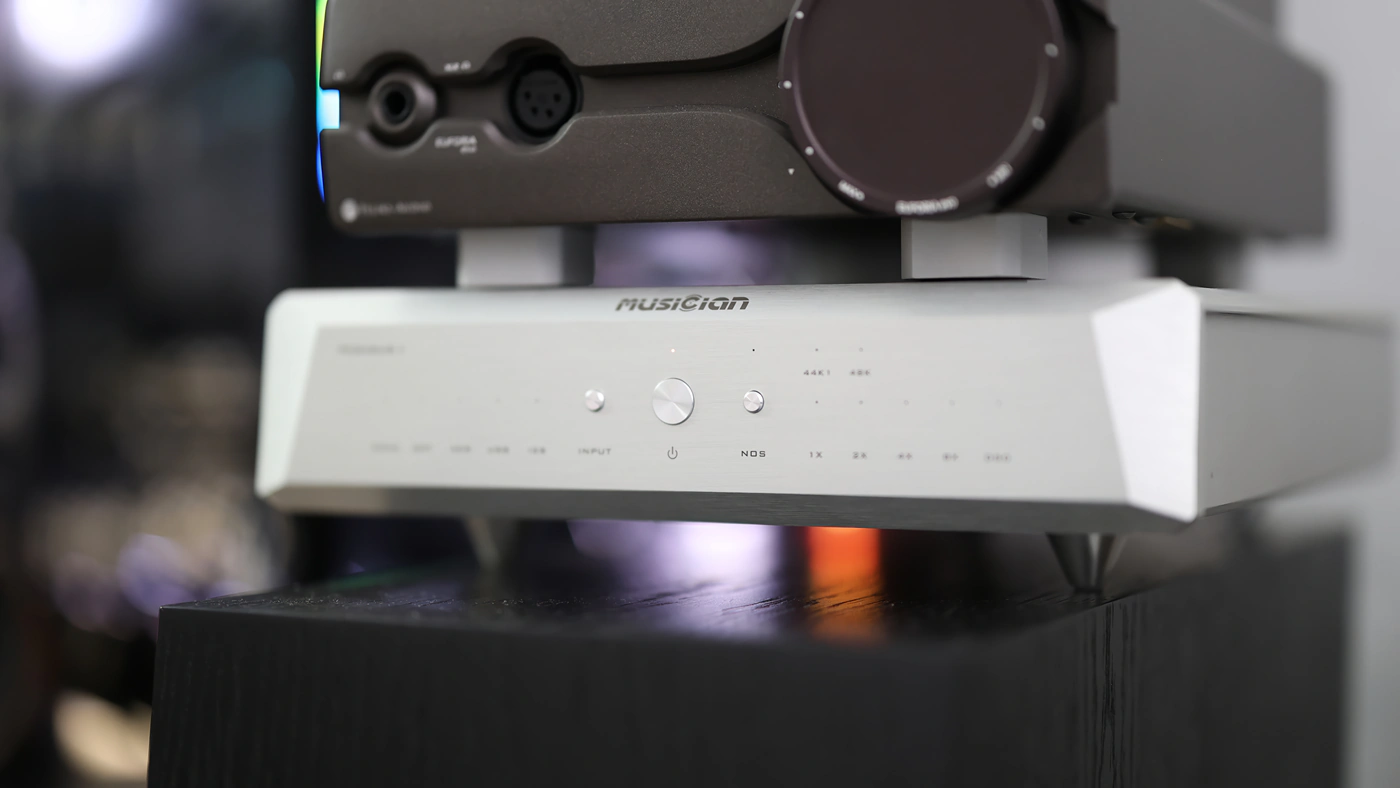
Musician Pegasus II allows for an upsampling up to 16X, and it has a 0.005% accuracy resistor inside. This helps it achieve a Signal To Noise ratio of 123 dB, with a THD+N at max volume of 0.002%, a huge rating for a DAC of this design. The input supported allows for sources up to DSD 1024 and PCM signals up to 1536kHz, through the USB and I2S inputs, although as of right now I do not have or have ever seen materials that go that high. It is nice to be future proof though. Main control of the unit is achieved through an Altera Cyclone V high efficiency chip, and this allows for high reliability and low power consumption.
Although I have not reviewed the original Pegasus, the company quotes improvements in the sound quality for the new Pegasus II, many of which have been achieved by using better materials in the construction of the DAC, offering a higher performance for the price paid. There has been an optimisation of the Power Tailstock, where the connection between the power delivery and the PCB is achieved through multiple single crystal copper wire wraps, and the PCB alignment for better power routing was also achieved after lots of experimentation by Musician for their Pegasus II DAC.
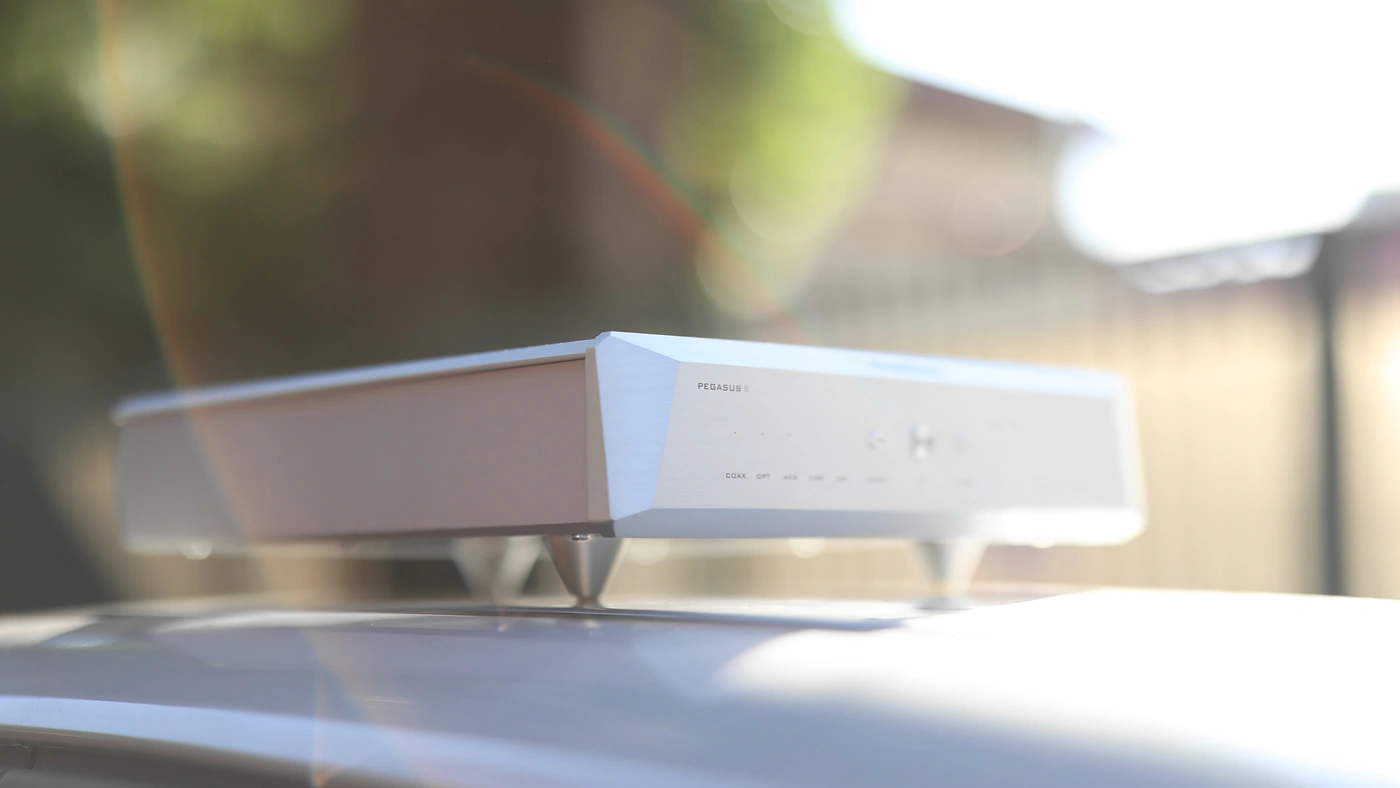
The RCA ports used are of a superb quality, and Musician has used higher capacity audiophile-grade capacitors for a better sonic performance. The R2R Arrays are arranged specially, by having each channel equipped with an independent high-speed FPGA to control the decoding through 4 sets of R-2r networks. This results in next to no linearity error, high decoding speed, and ultra low digital noise, resulting in one of the lowest distortions achievable for an R2R DAC, and a black background noise level.
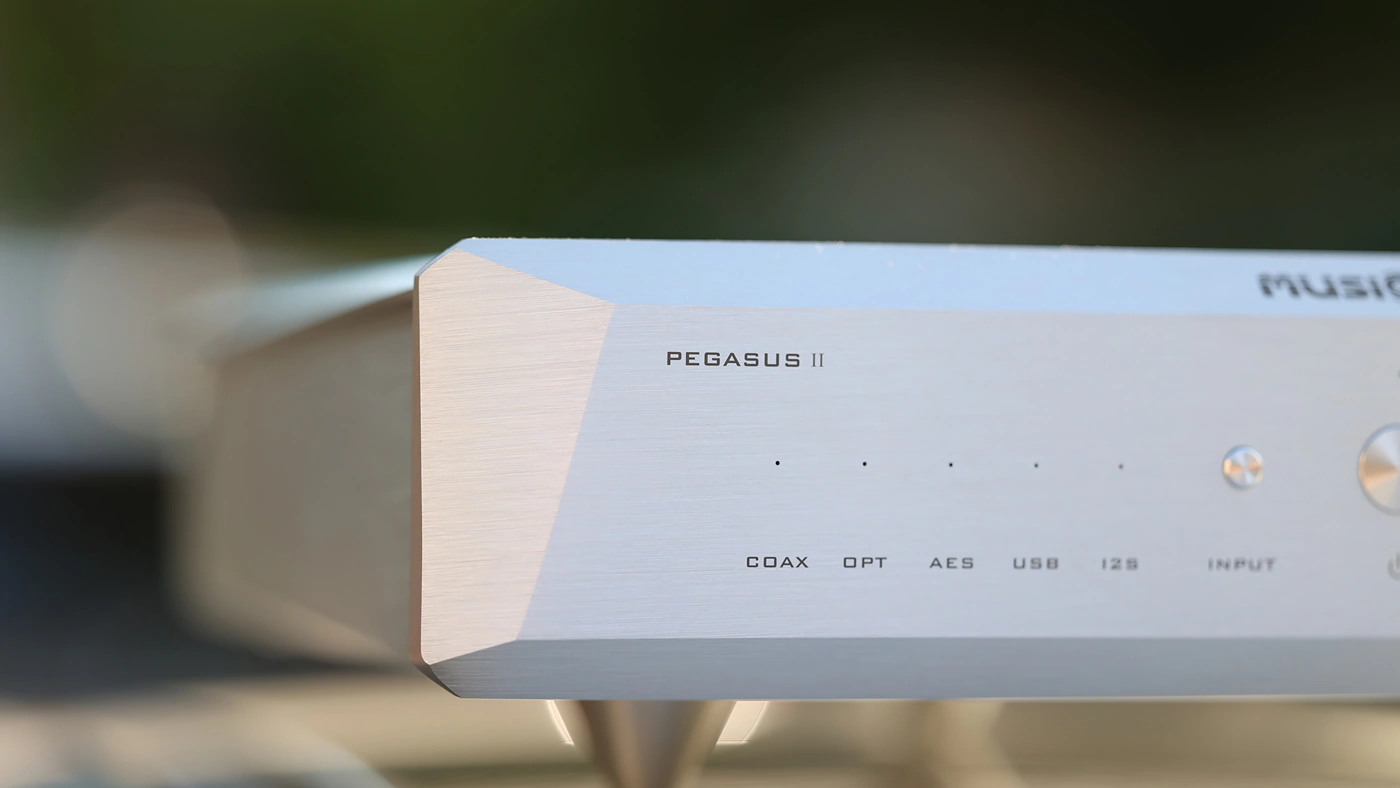
The power delivery of the DAC is provided through a Toroidal transformer with an iron core, and high-quality enameled wire. This ensures stable power supply and this self-made transformer can reduce the noise in the low frequencies, resulting in the cleanest sonic performance possible. The linear power supply has a thick metal casing, and a linear regulator that can effectively isolate the noise, being used for multi-level power supply in the digital and analog parts. For Linux and Mac, there is no driver needed, while for Windows you can install the Thesycon drivers, although in my Windows 11 PC that’s not needed either, as Pegasus II works plug and play perfectly well.
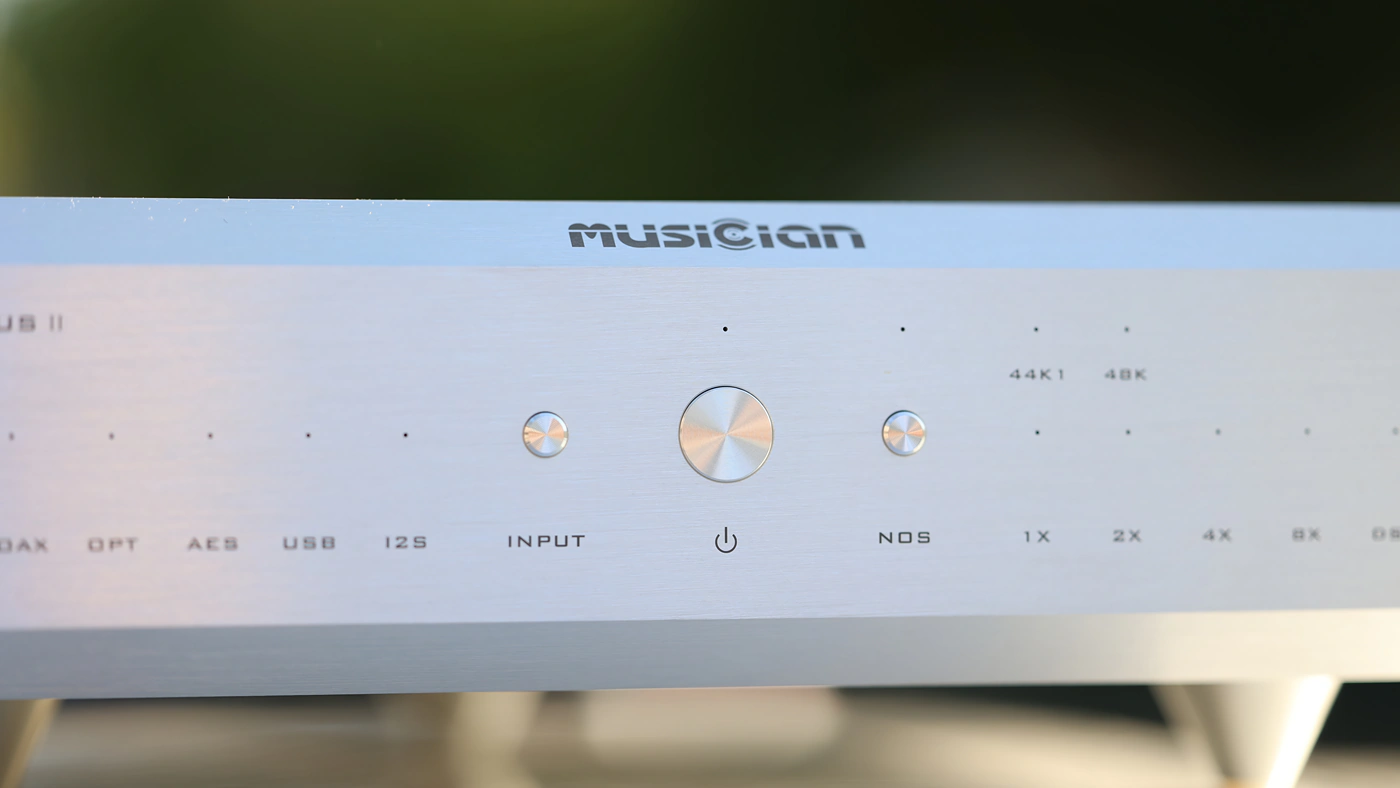
The output list includes an XLR and an RCA output, while the input list includes an I2S, Coaxial, Optical, AES and a USB input. There’s a large cattle plug for the power input, and all DSD inputs support DSD64 DoP, while the I2S and USB inputs support DSD1024 signals. The PCM supported on all inputs goes up to 24 Bits / 192 kHz, while the USB and I2S inputs support inputs up to 1536 kHz. The frequency response of the Pegasus II is quoted to be between 10 Hz and 60 kHz, while the Dynamic Range is quoted to be higher than 120 dB. Combined with a high voltage of 2.2 Vrms for the RCA output and a lower voltage of 3.55 Vrms for the XLR output, Pegasus II will sound quite loud when combined with amplifiers that use the single ended input, but allow for more headroom when used with devices that use a Balanced input.
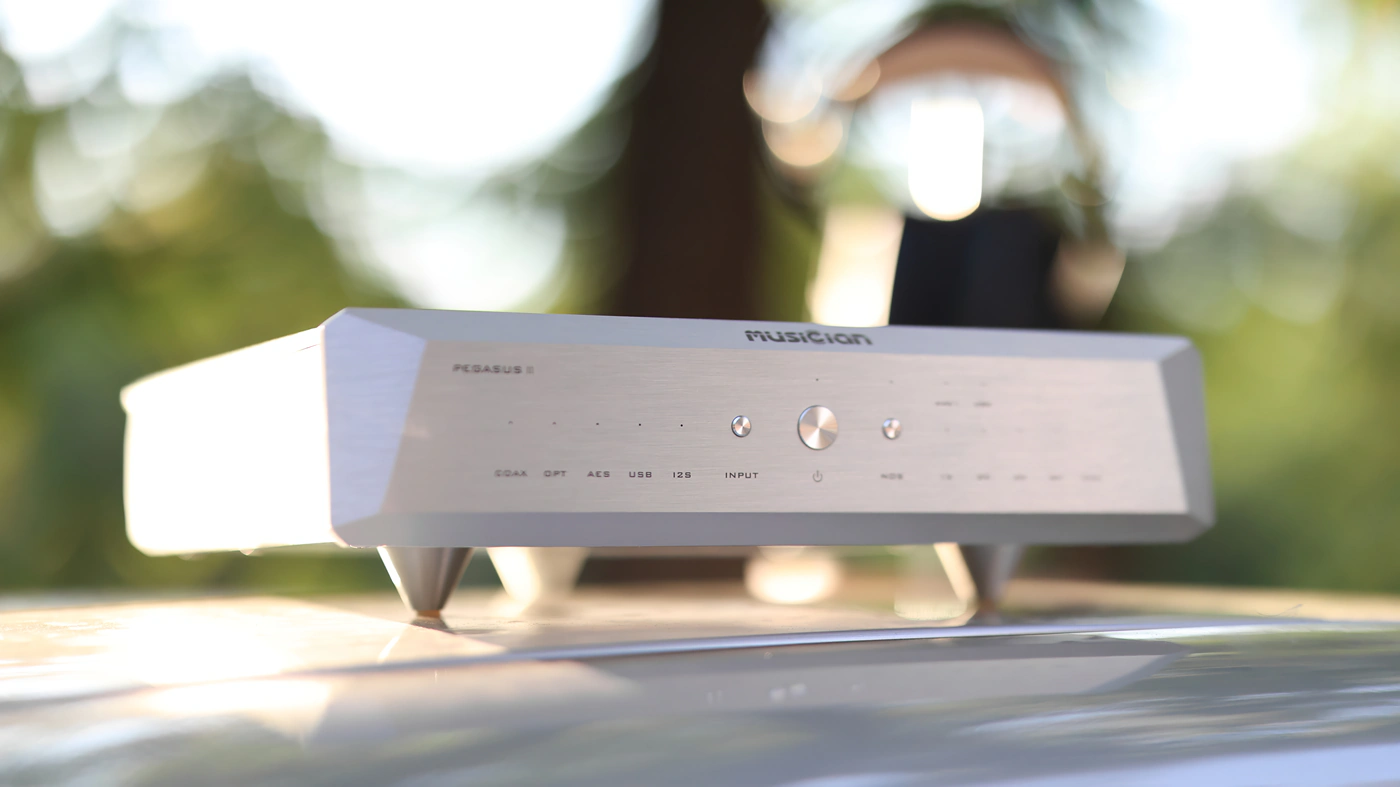
There is no USB DAC delay when using the Musician Pegasus II R2R DAC in my system, regardless of what Amplifiers it is connected to, it works perfectly with all bitrates, and all inputs sound excellent. I prefer using the USB input, but with a high quality USB to Optical converter,t he sound ios very similar between the Optical and the USB inputs, although Optical generally has a softer, gentler sound, while the Coaxial generally sounds a bit warmer and smoother, thicker, if using the same computer, same converter. At any rate, it works perfectly well when powered by any of the inputs, does not require a Driver on Windows 11, and all functions are flawless. It does not get hot during usage, and
Sound Quality
Pairings – Musician Pegasus II is an R2R DAC with XLR and RCA outputs, and it does not have volume control or PRE, so for a stereo system, it needs to be connected to an amplifier that has PRE, or the signal has to go through a PRE, then a power amplifier, while for a headphone system, it needs a headphone amplifier to drive headphones. For our review today, I took the time to connect the Musician Pegasus II in multiple systems, including Feliks Euforia Evo and Keces S300+ driving a pair of Pylon Diamond 30 MKII Speakers, Burson Funk Amplifier to drive a pair of NHT C3 Speakers, and a Cyrus One Cast driving a pair of Buchardt S400 Speakers. In all those systems I noticed a consistent trend with the Pegasus II, and that is an absolute lack of background noise, even when used via the RCA output. This is a rare occurrence, and most DACs will have a higher noise floor when using the single ended RCA output, but Pegasus II has absolutely no noise on both the XLR and RCA outputs. This means that there’s far more at work than initially advertised, including proper USB galvanic isolation, as my PC is known to easily introduce noise in DACs.
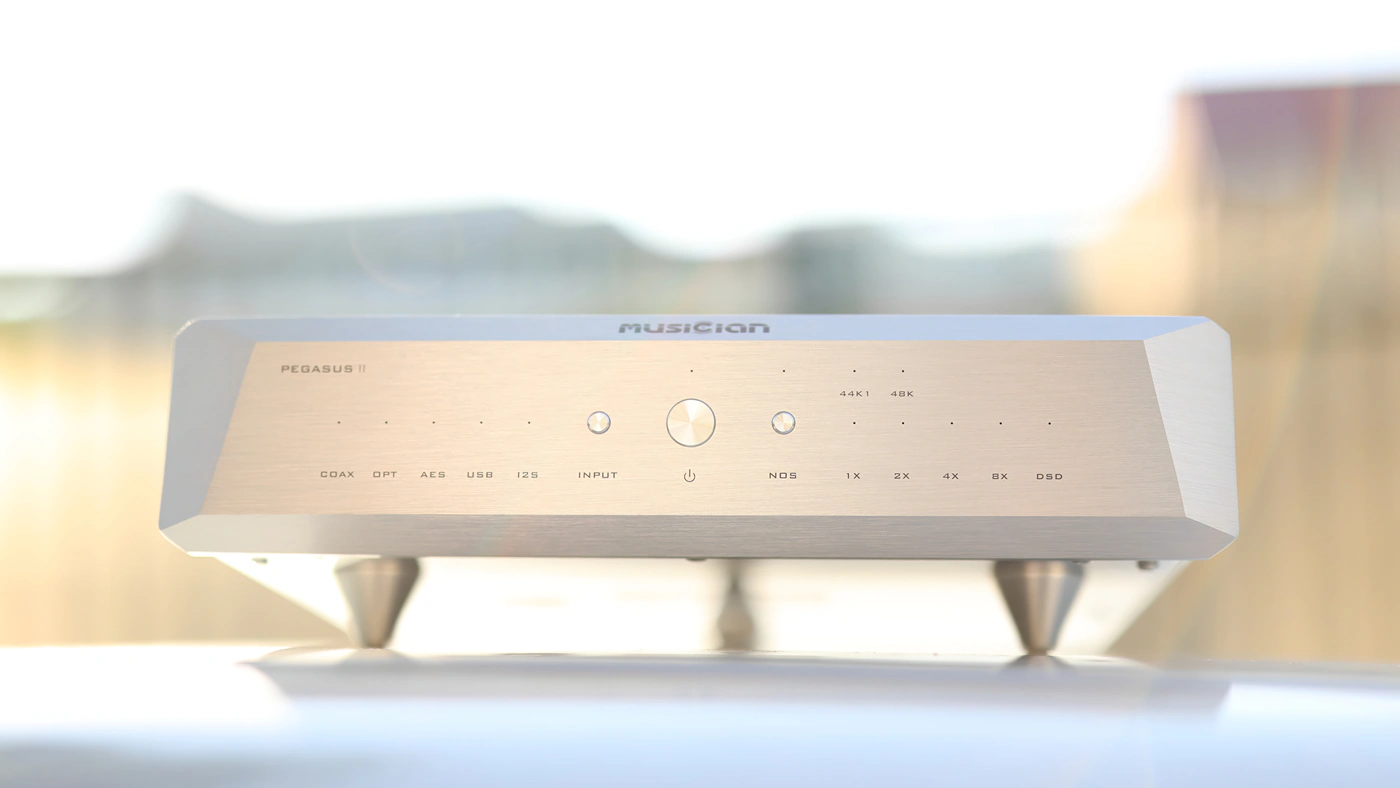
For the headphone part, I have used the Musician Pegasus II with the mighty HIFIMAN Mini Shangri-La Electrostatic system, with HIFIMAN Prelude Headphone Amplifier to drive HIFIMAN HE1000SE, and with Aune S17 PRO as the headphone amplifier, driving a pair of iBasso SR3 Headphones. For the IEMs, I have paired the Pegasus II with a Topping A50 III to drive a pair of Campfire Bonneville, and a pair of Sweear He-Live5 IEMs. With IEMs, I have also noticed the absolutely black background noise level, there is absolutely none, regardless of whether I am using the RCA or the XLR output. Generally, the RCA output is a bit louder than the XLR output, but the XLR output tends to be a bit more detailed and has a higher revealing level, but it is within the same ballpark, and I would happily use either for my listening habits. There can be no volume control part in the review, as Pegasus 2 always outputs signal at maximum volume, through all of its outputs. It is better to not have both outputs connected at the same time for best clarity, but I noticed no audible difference when having just the RCA or just the xlr or both outputs connected at the same time. There is the possibility that having the RCA output connected to an amplifier will add some noise with a less poor quality amplifier, but this should theoretically never be the case for someone considering a high end DAC.
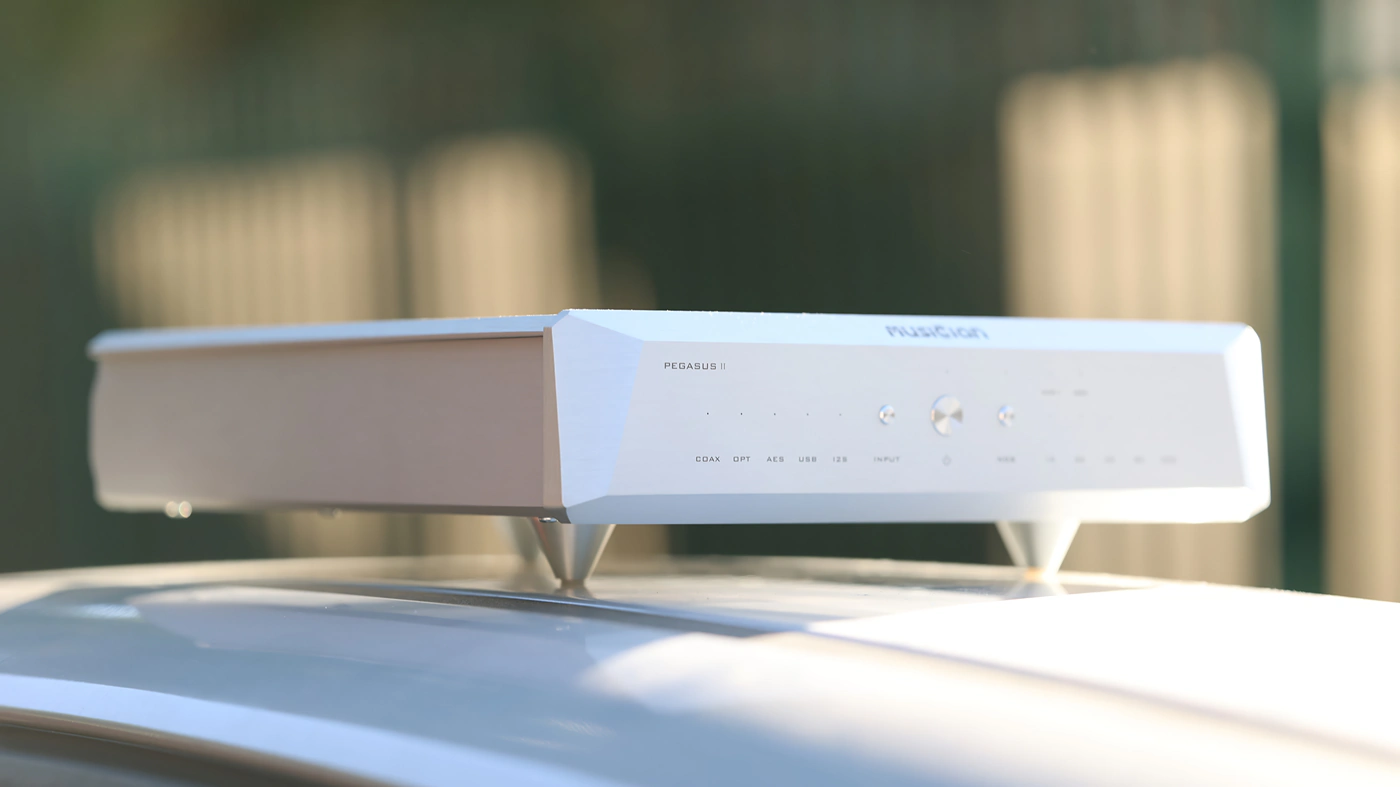
Overall Signature – Musician Pegasus II sounds open, detailed and clean, with a neutral-natural tuning, a strong and bold bass, exceptional depth and kick to the bass, an organic, detailed and ultra high-resolution midrange, and a bright, airy treble. There are two sonic modes, one in OS mode and one in NOS. The idea behind R2R is to explore the NOS mode too, which is a non oversampling mode, so basically a pure dac to your ears mode, but in that situation the sound is much softer, gentler and presents music with less impact, but more refinement, smoother and leaner, but relaxed and laid back. I prefer the OS mode, which does create one of the most detailed sounds I have ever heard in my entire life, despite using R2R DACs which are typically known for smoothness and softness. Even if using the NOS mode, the sound is still plenty detailed and clear. While our guideline is to generally recommend the upgrades to follow a path that goes Speakers / Headphones -> Amplifiers -> DACs -> Accessories, the Pegasus II DAC shows a much higher difference in performance than any other DAC I ever heard, and it actually is comparable to the difference in performance that an Amplifier typically brings to the sound.
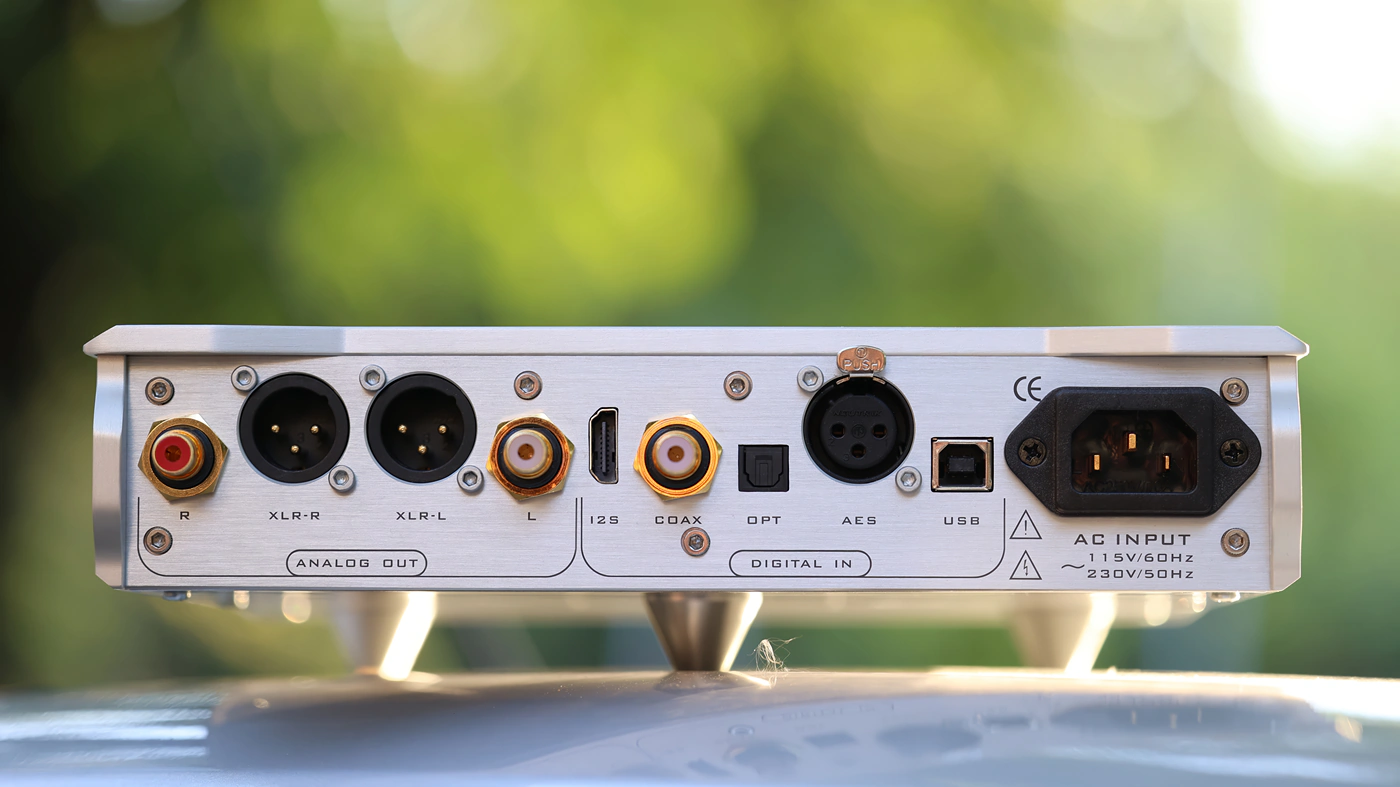
Bass – Starting with a thick and powerful low-end, strong kick and impact, but a quick speed, allowing for very detailed drum patterns to be revealed in technical death metal, and faster rock songs, but also perfectly clean and well defined for EDM and even pop music. The raw impact and depth that’s possible with the Musician Pegasus II, especially with the OS mode, simply shattered my perception of what the limits of R2R are. A good song to test the limits of the bass is any song when the bass is this good, but I went with Apashe – Witch, where the intro of the song is long, lightweight and snappy, with a wide and holographic presentation, but once the bass starts hitting, it rattles the entire sonic scape, taking a central place and controlling the whole substance in the song. Apashe likes to mix and master with insane amounts of bass, but Pegasus II shows excellent control, no distortion, and fat, thick and sloppy bass as the song should have. For something much faster and more engaging, Zomboy – Born to Survive showcases a bass that is snappy, quick and moves fast, can start and stop at the drop of a pin, and has the energy and presence to rattle the entire room with a fast attack and a satisfying long decay.
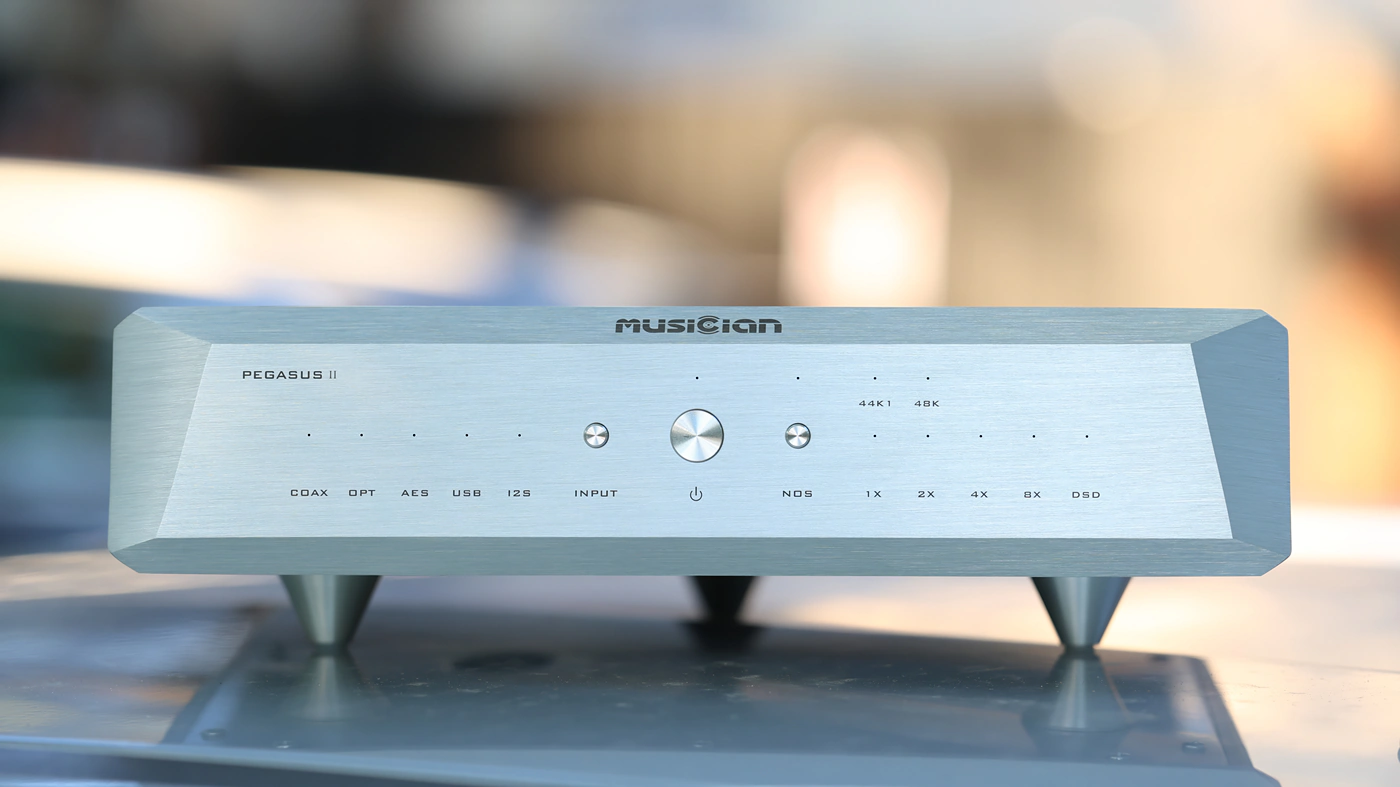
Midrange – A potent and vivid midrange, Pegasus II, especially in OS mode will paint a colorful and contrasty midrange, strong separation between instruments and a high level of accuracy, both male and female voices sounding natural and guitars in particular sounding really sweet and pleasing. Multiple layers of guitars are defined accurately, while special effects play distinctively in the background, distant from the listener, but clearly audible. There’s a strong separation between the layers, and most instruments are projected far outside the bounds of the room. Dance Gavin Dance is an excellent band to test the limits of a DAC, especially older songs like Synergy, where Tillian’s voice has a strong contrast relative to the harsh screams of John Mess. The song has a really wide space it is playing in, with Tillian’s voice having just the right texture and presence to sound natural, and John Mess sounds slightly more distant, spot on with the style he uses while recording, as he takes a step back from the microphone. A good DAC will keep the multiple layers of lead guitars separated from each other and from the rhythm guitars, Pegasus II having an exceptional performance, and painting a sweet, delightful and playful sound with strong contrast and outstanding resolution / details. There is simply so much information in this song that I didn’t even know existed. I consider Pegasus II the most playful, colorful and vivid R2R DAC I have heard to date with the music tested, especially for the XLR output.
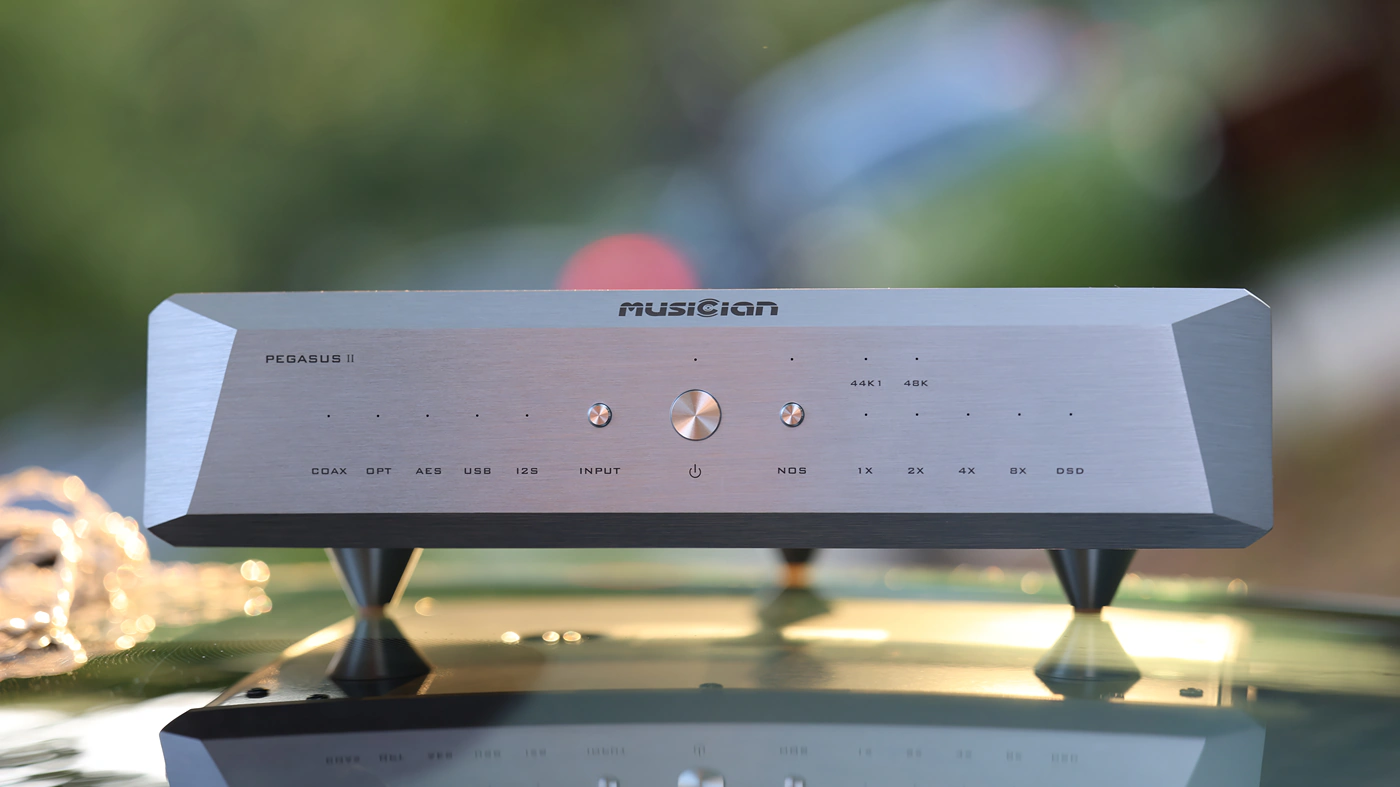
Treble – Most R2R DACs offer either a treble that’s too smooth and lacks impact, or one which is grainy and hard edged when using the OS or OverSampling filter, so it is super nice to hear Pegasus II offering what I consider to be perfection. Extension goes clearly as high as my hearing goes, but the interesting part is that Pegasus 2 offers a clean, refined treble that has good energy and impact, for the OS mode. Especially with revealing IEMs and Headphones like HE1000SE or Campfire Bonneville, Pegasus II has an immediately different sound when going from OS to NOS, and treble is heavily impacted by it, as it is much softer, rolls off softly and sounds less forward in NOS mode, while it stays airy, bright and brilliant, with a strong revealing ability in OS mode. The two sonic modes exist on every R2R DAC, but not every DAC implements them in the same way, and Pegasus II offers two extremes, either a really soft and gentle sound, or a hard, revealing and detailed one, best of both worlds.
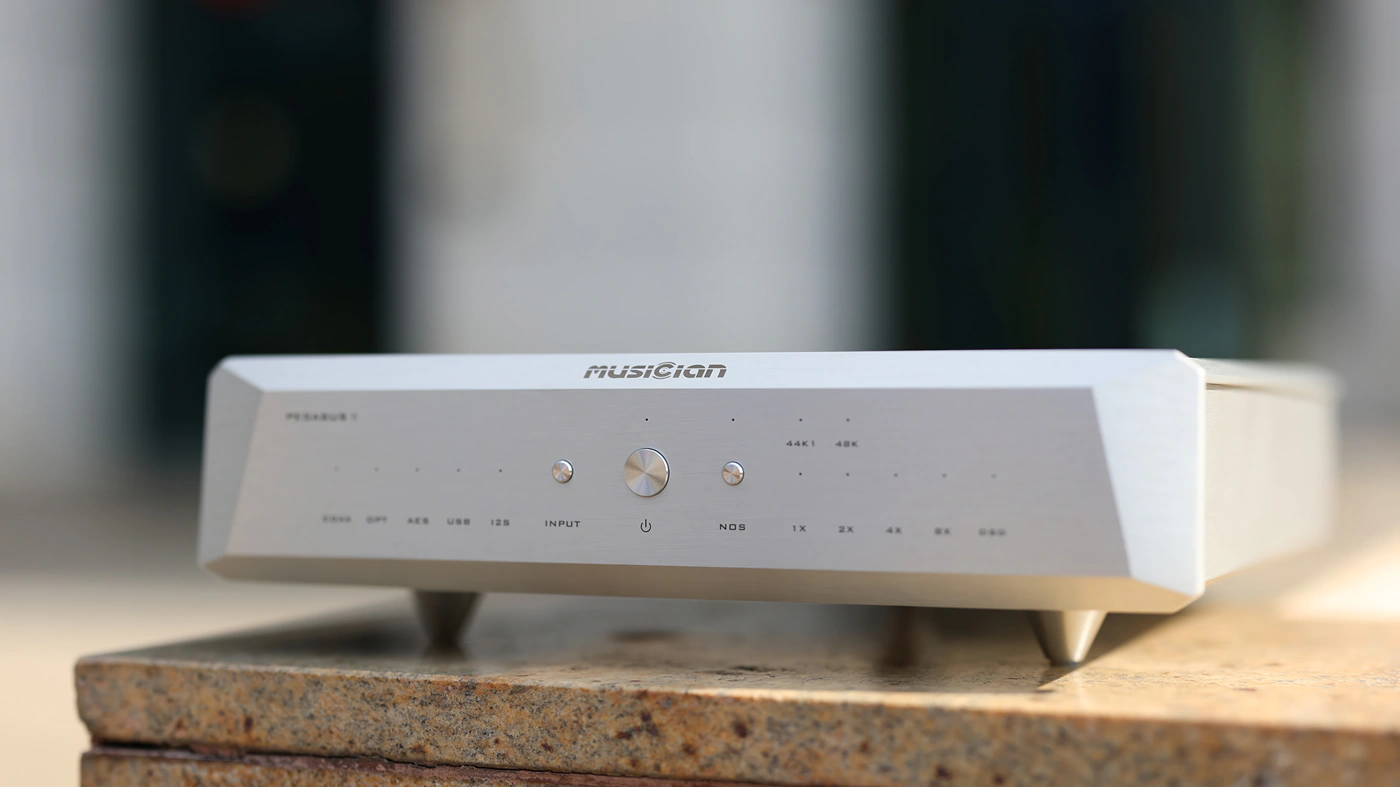
Dynamics / PRaT / Textures NOS – Here the OS and NOS will have the greatest impact, and I generally have explored the sound with the OS mode as the NOS mode is not that far off in performance, but when it comes to textures, PRaT and dynamics, the difference is huge. In the NOS mode, textures are soft and gentle, refined and across all frequency ranges, there’s a sense of relaxation, laid back and soft tuning. This is how NOS is supposed to sound like, and Pegasus II is extremely detailed and clean, but in a soft and gentle fashion instead of the usual razor sharp surgical way that Delta Sigma sounds when it has this level of resolution. In fact, you will likely notice that as you climb the price ladder, most high end DACs use R2R, 1 Bit or unique solutions to overcome the limitations of Delta Sigma chips.
Dynamics / PRaT / Textures OS – Although at first it may feel like OverSampled mode would circumvent the idea behind R2R DACs, an oversampling filter is actually helpful in achieving a strong balance between the refinement, smoothness and resolution of an r2r dac and the more impactful, punchier sound that Delta Sigma usually offers. In OS mode, the sound of Pegasus II is sharper, punchier, more defined, with a strong kick, wider, more airy soundstage, textures are harder and more evident, detail is revealed more easily and there’s a higher sense of separation and better definition for the dynamics. If the best dynamic range and most crisp sound is your ultimate aim for your setup, then using OS mode would offer that, while if a softer, gentler sound with a relaxed approach is more of your thing, use NOS mode. A dac that offers both is convenient.
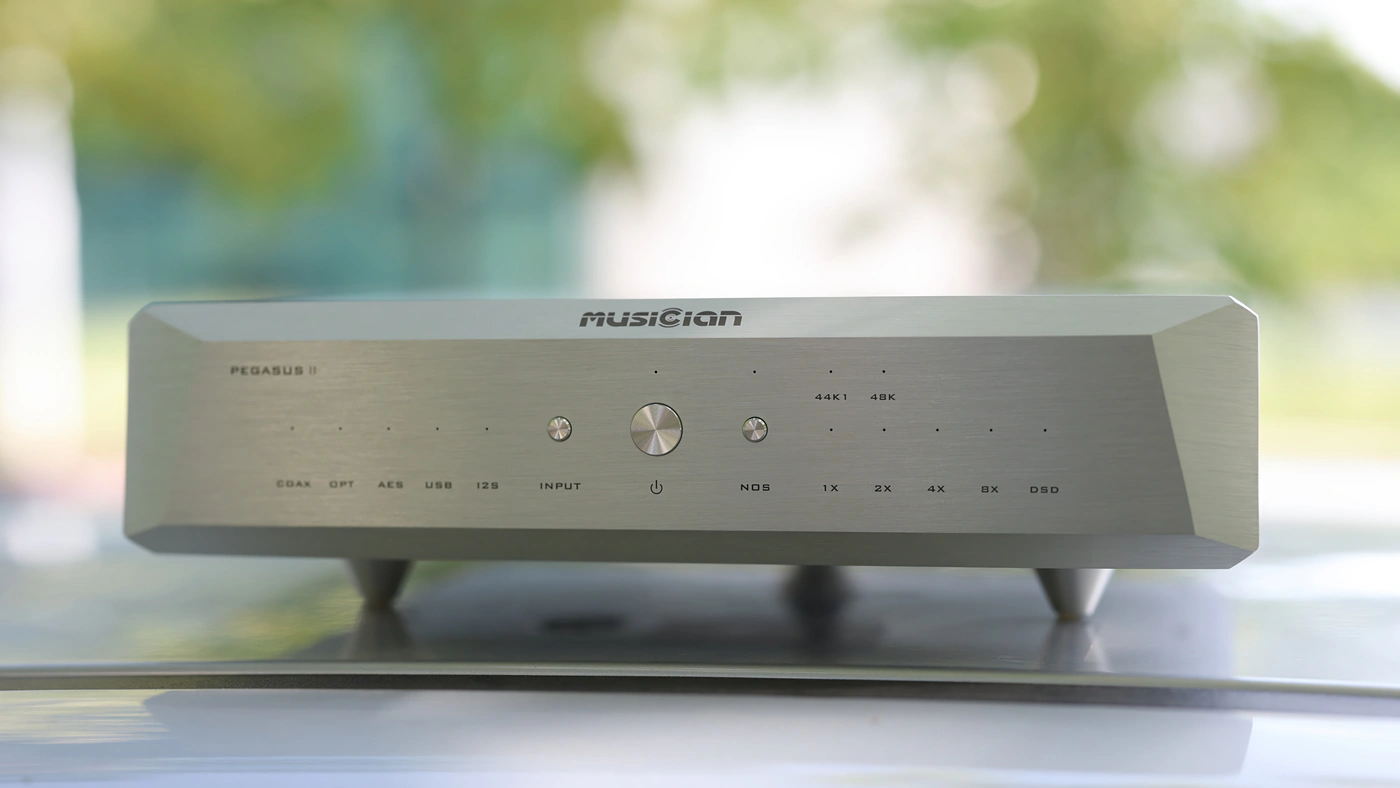
Soundstage – Staging is one of the best parts for Pegasus II, it expands both laterally, vertically but also in depth, allowing music to have a strongly 3D presentation, placing you precisely in the middle, and playing music all around you, playing instruments above, behind, in front and right within you for certain songs. The most impressive aspect is that it keeps a perfect instrument separation, it allows you to hear each instrument as its own unique space it is playing within, music expands without bounds, yet the bound between instruments is clearly defined, and allows for an intricate listening experience. I noticed this with multiple songs, where information that was typically not even clearly audible with most setups, now suddenly pops up and is obvious, resulting in a really satisfying and vivid listening experience.
Gaming Usage
Although it is a bit excessive for a gamer’s typical needs, Musician Pegasus II R2R makes an excellent option for someone who is into high-end gaming, it offers instant response to impulse, no delay for the USB DAC, and is compatible with high resolution formats. The ultra detailed sound is excellent for all game styles, it has precise placement of the listener in the sonic scape, it makes each detail easy to understand, so you can hear all of the sounds happening in your game, and it also has no background noise that could distract you from your games or music.
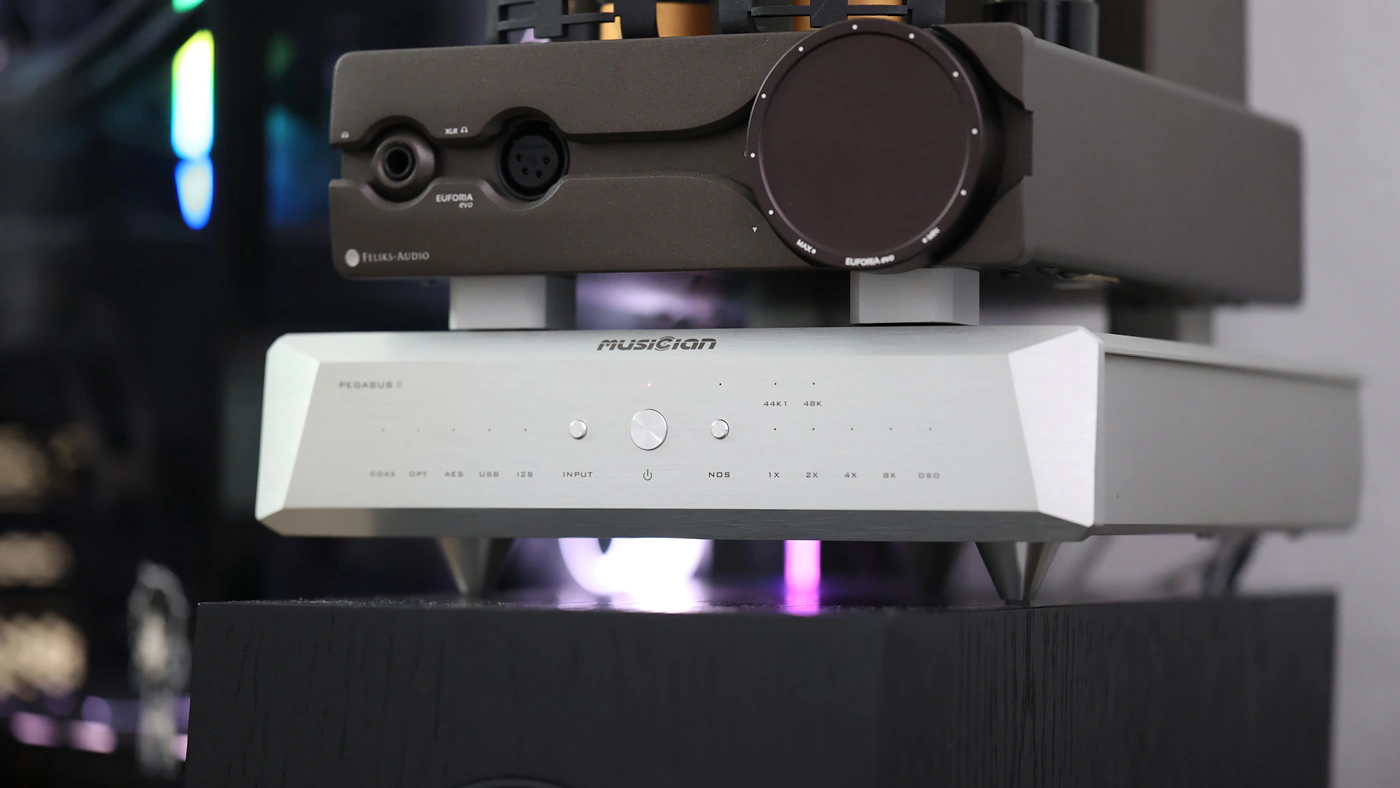
The sound works equally well for fast paced games, thanks to the deep and powerful bass, and strong impact, but also for atmospheric games thanks to the wide and holographic soundstage. You can at times hear a solo violin playing in the back of the right ear, or a distant guitar finely grazing your ears with sweet notes while you’re exploring a desert landscape, creating an invigorating experience for listening to music.
Comparisons
Musician Pegasus II R2R DAC vs Keces S3 (1099 USD vs 1300 USD)
Build – Keces S3 is made of metal and available only in one color, but it is also fairly well shielded from noise, having a low background noise as we see with the Musician Pegasus. When using both as DACs, both are entirely silent, although S3 can be used as a headphone amplifier, and it has a PRE function, while Pegasus II has no pre or headphone output function. Both DACs can receive high resolution signals, and both satisfy my needs equally well, although subjectively, the smaller more modern build of the Pegasus II makes it more likely to live atom of my desk, and it is not as hot running as Keces S3 during usage, also making it a favorable contender for most setups.
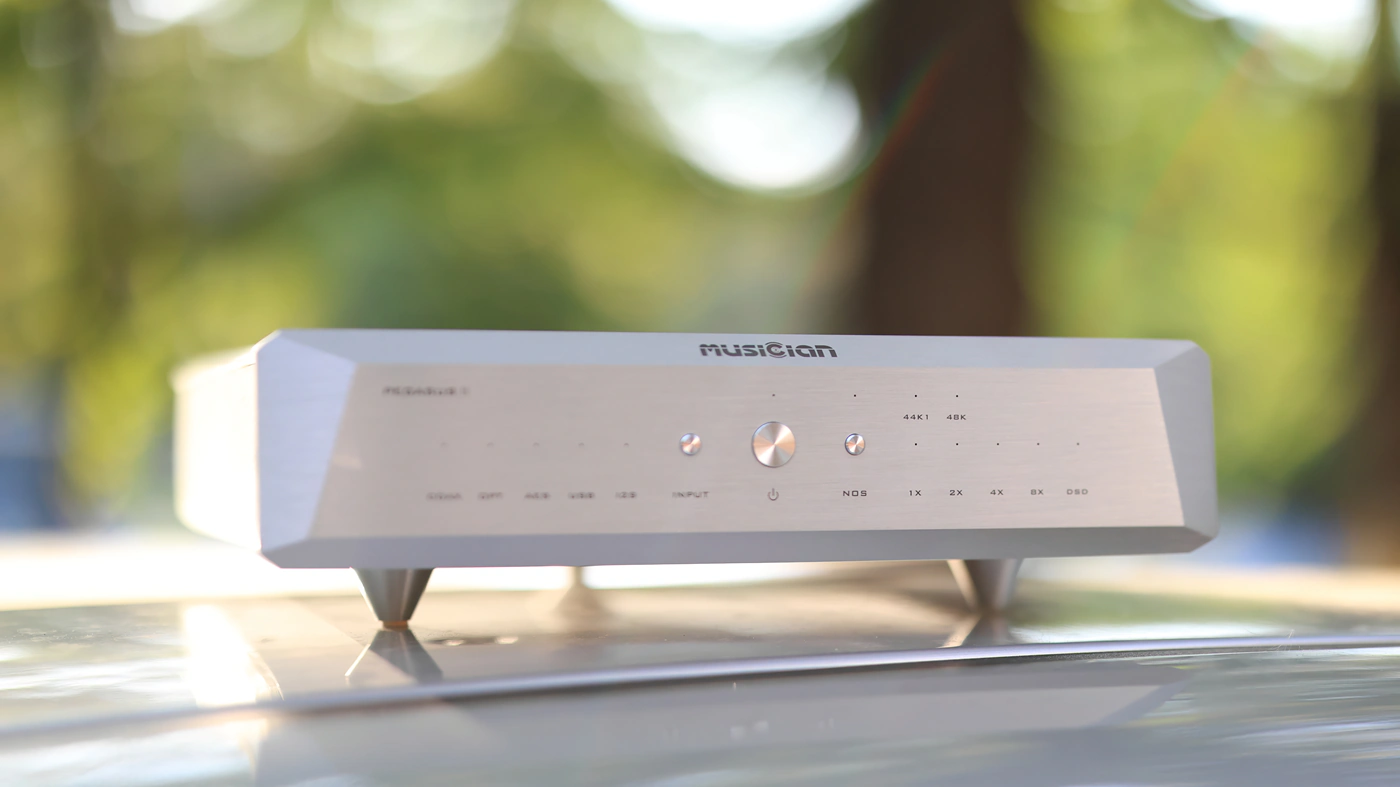
Sound – Sonically, both are revealing, detailed and clean with very little noise and distortion. S3 has a traditional DAC chip inside, so it sounds a bit harder, more edgy and with a bit more width and lower depth to the sound. In contrast, Musician Pegasus II sounds deeper, more rounded in the soundstage, has a stronger instrument separation and a higher degree of clarity with voices, it makes each sound more evident and has a higher dynamic range, and a more refined sound. Pegasus II brings more bass to the sound, has more kick and punch, and more oomph in the lows, but a smoother, more refined treble, and a more organic sounding midrange, while S3 sounds surgically sharp, bright, neutral and brings out more treble in music, is more raw sounding and has a more neutral bass. Speed is about equal between them. The choice here will be between having a simple DAC that has the maximum possible sonic performance, like Pegasus II, or having a more complex unit like Keces S3, which has headphone outputs, Preamplifier functions and more, being more versatile and easier to use in complex systems.
Musician Pegasus II R2R DAC vs Audio Analogue AAdac (1099 USD vs 4000 USD)
Build – AAdac is quite a bit larger, heavier and longer when compared to the Pegasus II, but AAdac comes with a headphone amplifier, it comes with an even more solid power delivery and filtering stage inside, yet the DAC chip is not as impressive as the ladder DAC array employed by Musician in their Pegasus II. both are silent when used via the XLR output, and AAdac can drive headphones with a bit of background hissing for IEMs, being best for larger, hard-to-drive headphones, while Pegasus II is best for systems where the amplifier is external. An interesting fact I have noticed is that Pegasus II is less sensitive to noisy USB ports and will stay cleaner with less noise, and it is also far less noisy on the RCA outputs, staying cleaner and having a black background level. AAdac comes with a high-end remote, and 2 coaxial inputs, but it does not come with an I2S input, which is present on the Pegasus II.
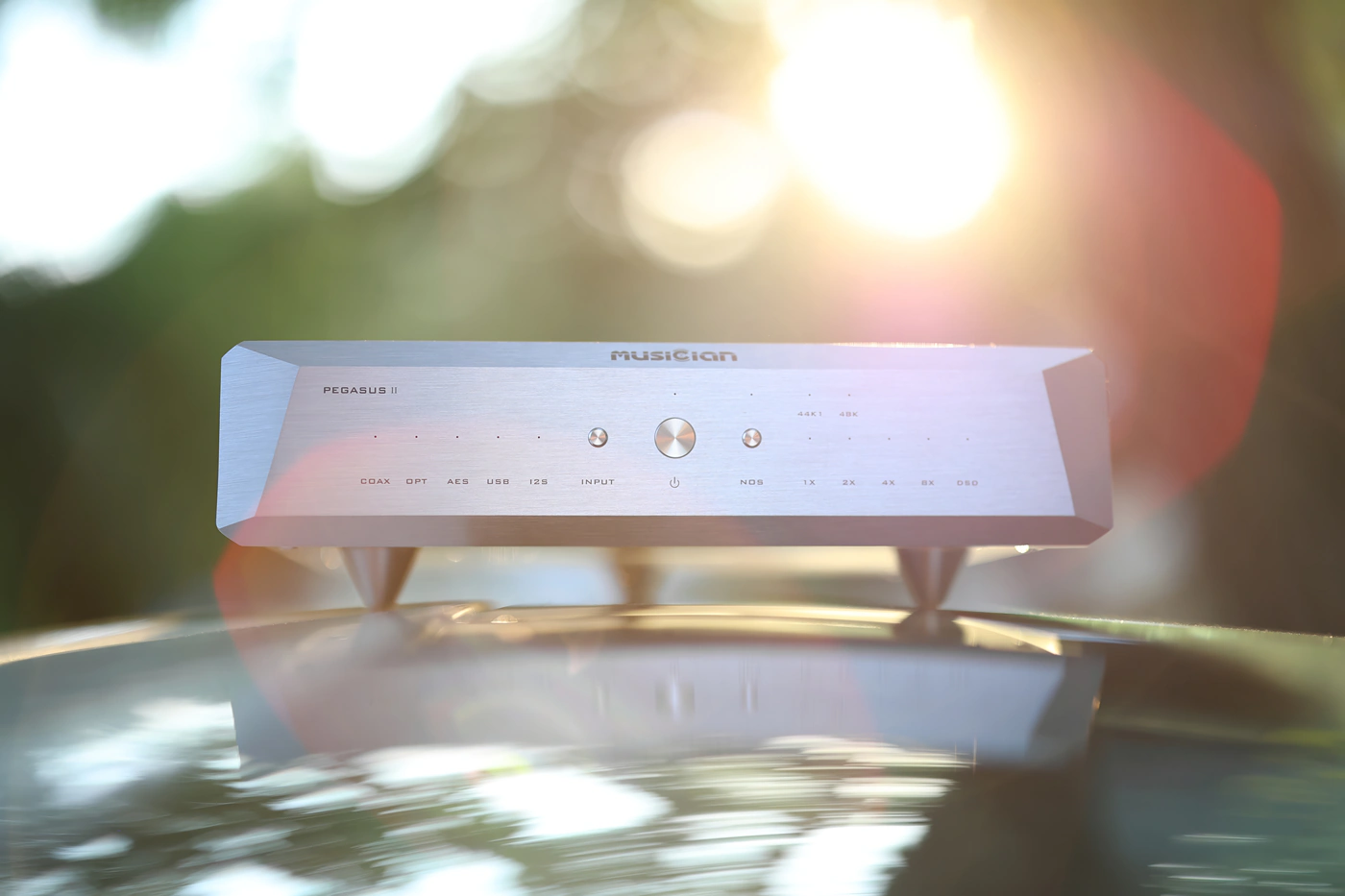
Sound – As AAdac comes with a single traditional-style ESS DAC inside, you’d expect it to sound sharp and detailed, but it actually has a lot of filtering and a complex analogic stage, so the ESS Sabre 9038 inside is made to sound smooth, warm and full, with a thick and lush bass, and a smoother, more refined treble. In contrast, Musician Pegasus II uses a complex array of R2R DACs with excellent performance, and they have a lower distortion at maximum volumes, they also have a more organic sounding midrange, more natural bass and an airier treble, with a deeper and a wider soundstage. Although AAdac is projected and designed extremely well, there’s a limitation implied by the DAC chip inside, which has been surpassed by Musician in their Pegasus II with the implementation of the R2R DACs at the heart. I prefer using the Pegasus II in the OS mode, as the NOs mode sounds much softer, gentler, smoother, slower in the sound and more relaxed, which is not exactly my type most of the time, as rock and metal will work better with a stronger dynamic and a punchier sound.
Musician Pegasus II R2R DAC vs FiiO K9 PRO ESS (1099 USD vs 849 USD)
Build – This would not have been at the top of my comparison list, as K9 PRO ESS is the kind of DAC that has a mnultitue of functions, and the cost of the device was spread in offering it multiple USB inputs, headphone amplifiers, and a high-qualityu PREamplifier, but with the cost of the two being similar, I received a lot of questions about how the two compare and if I would recommend K9 PRO eSS or Pegasus II for a stereo system, and especially for a system with an external headphone amplifier like HIFIMAN Prelude. Technically, there’s much more than K9 PRO ESS can do for headphones, but if you reduce both to the function of a DAC, you have a PRE function with K9 PRO ESS, which is not present with the Pegasus II. Via the XLR Balanced outputs both are absolutely free of any noise, but here I can test using K9 PRO ESS as the DAC/AMP, or use the Line In to use Pegasus II as the DAC. The bottom line is that the XLR performance is technically excellent for both, but there is less source isolation with K9 PRO ESS, and it inherits noise over the RCA Single Ended output with most external amplifiers.
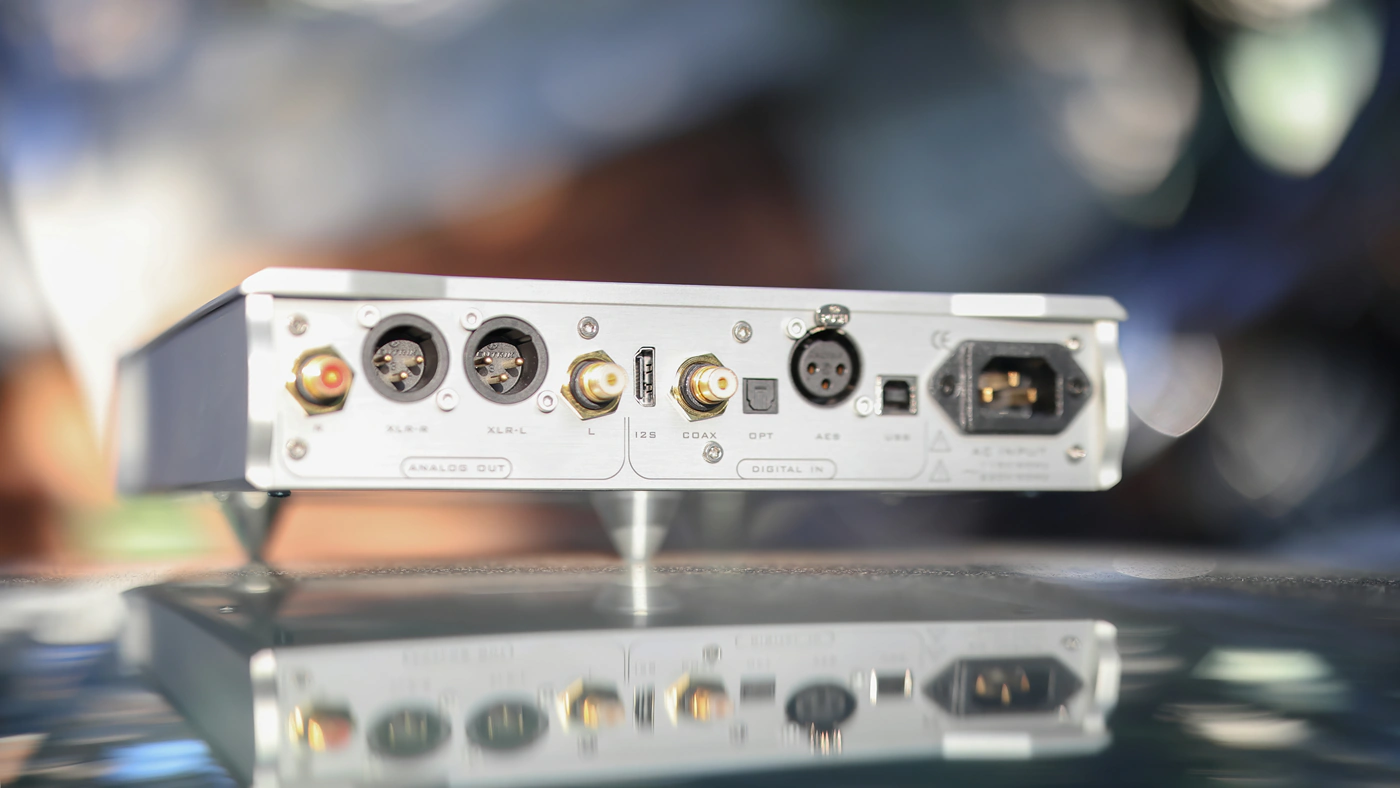
Sound – Sonically, K9 PRO ESS sounds really neutral, flat, a bit dynamically compressed and very clean, lean, and with a sharp, edgy treble. Musician Pegasus II sounds organic, smooth, lush and with far better instrument separation, having a deeper and a wider soundstage, and much more detail and clarity. K9 PRO ESS has one of the strongest, mos colorful sounding headphone amplifier stages on the market at the moment, so it makes sense that it is a popular choice, but if you’re looking for raw DAC performance, more can be had from a DAC that has no PRE and which doesn’t fit in so many functions. Of course, the cost is in money, and Pegasus II is pricier as a unit, but can offer a better standalone DAC performance. If you need a combo or don’t have an external PRE / Headphone AMP / Stereo Integrated AMP, then K9 PRO ESS can be a more compelling offer, while if you already have an excellent setup and just need the DAC, Pegasus II is a more natural choice.
Musician Pegasus II R2R DAC vs Denafrips Ares II R2R DAC (1099 USD vs 800 USD)
Build – We cannot spend all the time of today’s review just comparing an R2R DAC to Delta-Sigma DACs, so here is Denafrips Ares II, a standalone DAC with no volume control but with more inputs, having two optical inputs, two coaxial inputs and one USB input, but no I2S input like Pegasus II has. While Pegasus II can support higher data rates, I do not have access to files to test whether it makes a difference in the long run. Ares II features two of the most important things I’ve seen in a high-end DAC, and those are a clean XLR output, and the option to change between OS and NOS easily, both of which are present in the Pegasus II and even enhanced. It is easier to change between OS and NOS on the Pegasus II, it does not have to mute when changing, and it also has an even lower noise floor compared to the Ares II. In fact, the best part about Pegasus II is that it has a cleaner, less noisy output when using the RCA output, while with Ares II, some computers can present a bit of background noise, for the single ended output.
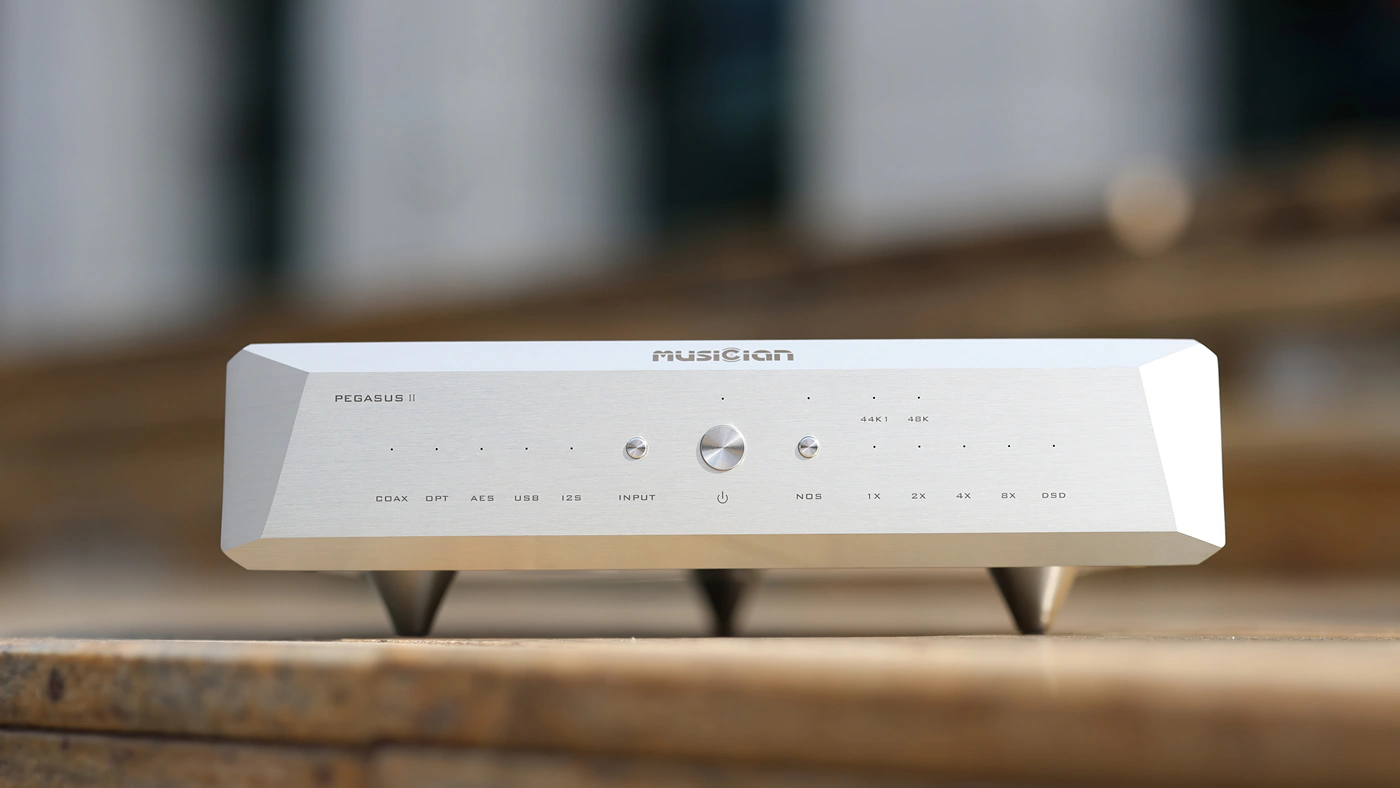
Sound – Sonically, Ares II is much softer regardless of whether you’re using OS nor NOS, it is a really soft and relaxed sounding DAC, with less focus on the technical side of things, less focus on the instrument separation, details and clarity, and more focus on staying as laid back and smooth / chill as possible. Pegasus II sounds much more resolving, wider, deeper, and far more detailed. The bass is deeper, has far more kick, impact, and depth, is harder and faster, whole voicing is more natural, more forward, and has more attack. The treble of the Pegasus II has more air, energy, extension, and brightness. Pegasus II is favourable for rock, metal, EDM and pop, it reveals more detail and information, so it is superior technically, while Ares ii is more relaxed and leaner. If you know you want the kind of relaxed tuning of Ares ii, Pegasus ii offers it in the NOS mode too, but Ares ii with nos mode sounds really soft and gentle, most listeners yearning for more impact and punch. Right now, Pegasus ii offers a superior experience and is more recommended despite the higher price.
Musician Pegasus II R2R DAC vs Dethonray Listening M1 (1099 USD vs 2599 USD)
Build – Dethinray listening M1 has a beautiful design, is much smaller than Pegasus II and much lighter too. Pegasus has xlr outputs, which are not available on the Listening M1, and Pegasus ii also has no volume control while listening M1 has a pre function and can drive headphones, being in top 3 dac amps ever produced, the headphone amp being super strong but controlled. The RCA output of Pegasus II is cleaner with a lower background noise, so it is suited better for being the dac in a full system while Listening M1 is a complete listening solution that’s made to work that way.
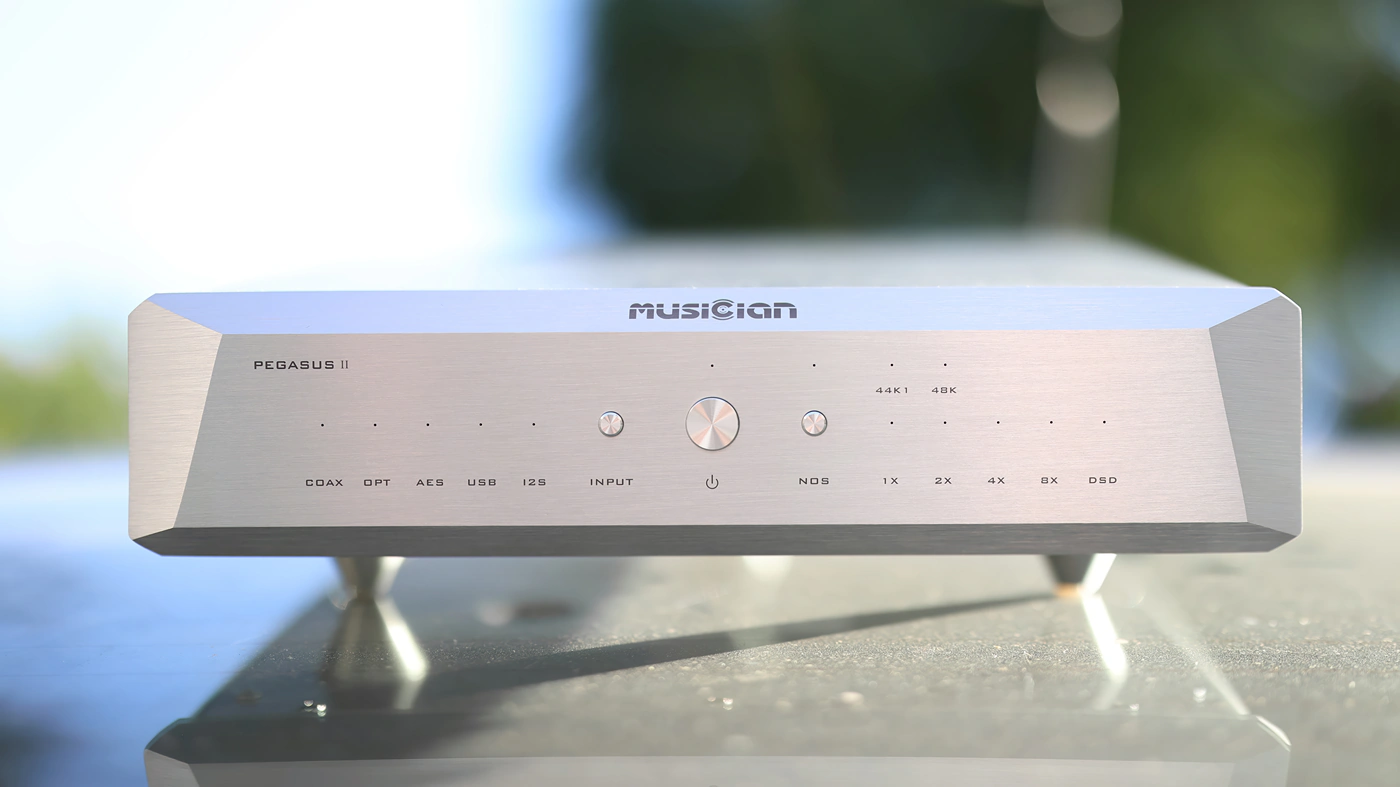
Sound – Sonically, Listening M1 is far warmer, thicker and smoother, fuller and bassier, and this applies to both the DaC and the Headphone Amplifier parts. Listening M1 is quite excellent for the love of bass, but it’s really full and warm sounding which is very specialized. Musician Pegasus 2 sounds wider, more holographic, deeper and also more neutral / natural. There is a good sense of instrument separation for both, and both have excellent dynamics, but Musician Pegasus II has a higher dynamic range, more air and space, but sounds more neutral, while Listening M1 offers more warmth and intimacy, higher impact and low end presence. The choice here is hard , both are quite excellent, but Pegasus II is better as a standalone dac in a full system, while listening M1 is a convenient, compact all in one listening solution, wiser to recommend for someone with limited space and no need for an external dac.
Value and Conclusion
I usually approach reviewing a high-end DAC with caution of the fact that their pricing is usually quite high, but Musician offers an excellent performance, and I feel like it is the one link I always needed in my system and never knew I’d appreciate so much. Although it is an R2R DAC, the OS performance is out of this world, offering what I consider to be mind-blowing resolution, clarity and revealing ability, much better than even DACs far pricier than it.
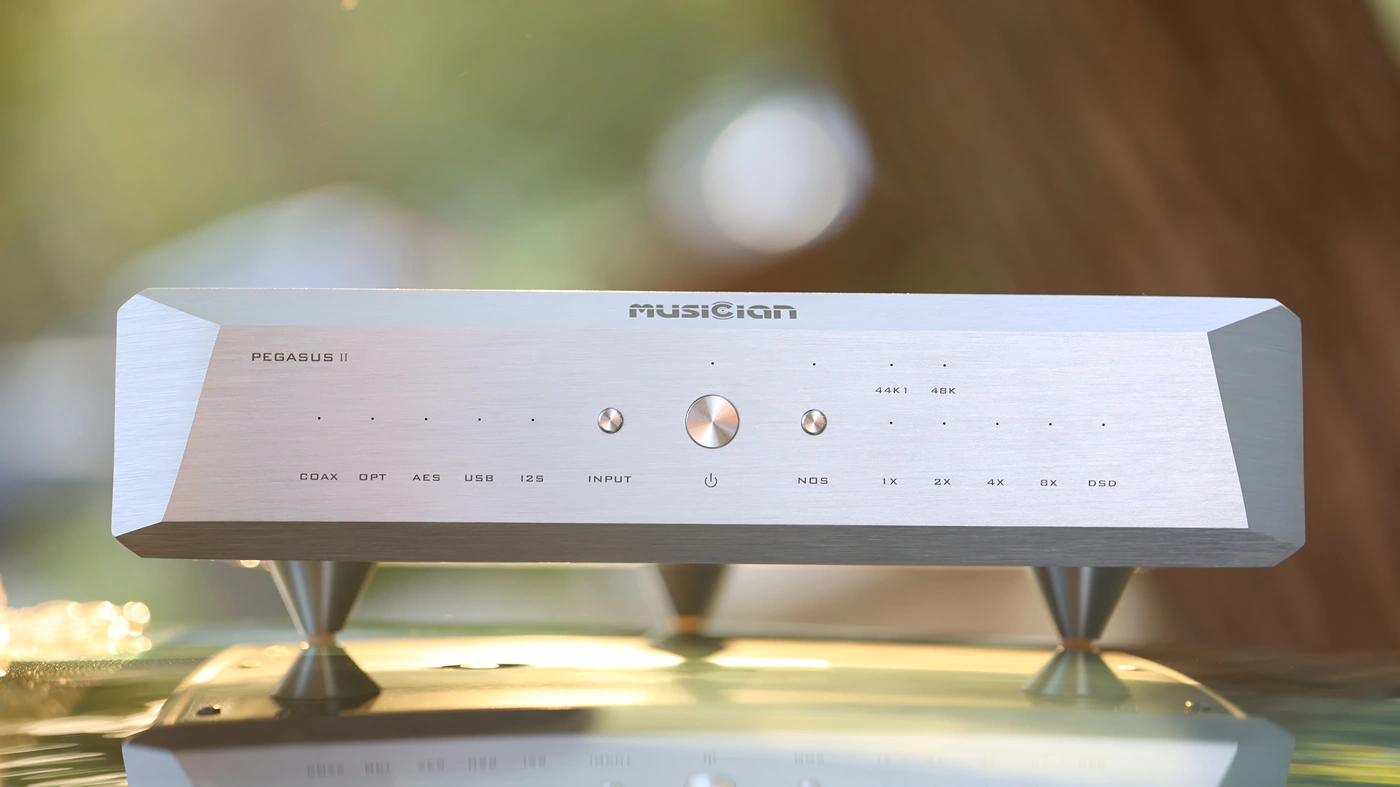
Before the end of the review, I want to add the Musician Pegasus R2R DAC II to the Audiophile-Heaven Hall Of Fame, it is impressive, offers performance far above the price point and it offers a sound, resolution level and general presentation that I have not heard before with anything, and which I enjoy very much.
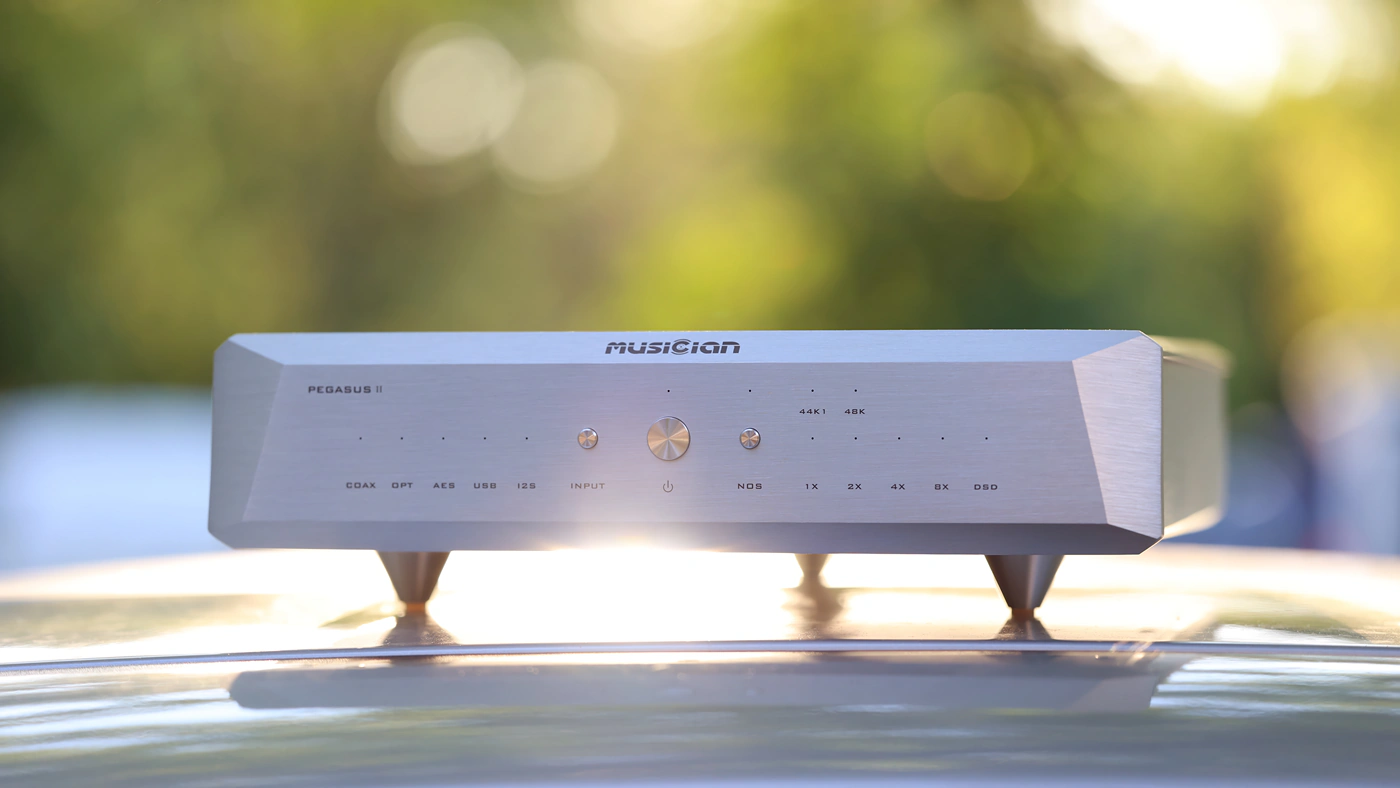
At the end of today’s review, Musician Pegasus II is a high-end R2R DAc and if you have a high-end stereo system, or a headphone amplifier and pair of headphones you really like, it will bring the resolution, refinement, clarity and precision you have always dreamt of, offering a proper high experience, with no background noise, but a holographic, punchy, vivid sound, vitality in the treble, sharpness and precision, combined with an organic midrange that makes all voices sound pure and natural.
Product Link
Aoshida Official Website – https://aoshida-audio.com/products/musician-pegasusii
Aliexpress Store – https://www.aliexpress.com/item/4001054786298.html
Amazon – https://amzn.to/3AJjNP6
--- Please remember to stay safe, and always have fun while listening to music!---
- If you have a dime to spare, please donate, and help us! It would make the day brighter for me and my wife-
Full Playlist used for this review
We listened to more songs than those named in this playlist, but those are excellent for identifying a sonic signature. I recommend trying most of the songs from this playlist, especially if you’re searching for new music! The playlists are different for Spotify, Tidal and Youtube, and based on the songs I enjoy and are available on each!
https://www.youtube.com/playlist?list=PL_cjBXGmwSHSdGcwuc_bKbBDGHL4QvYBu
https://open.spotify.com/playlist/5J3oloz8Riy9LxEGenOjQ0?si=979ba4f082414be7
https://tidal.com/browse/playlist/330fd544-8e5b-4839-bd35-676b2edbb3d5
--- Contact Us ---





